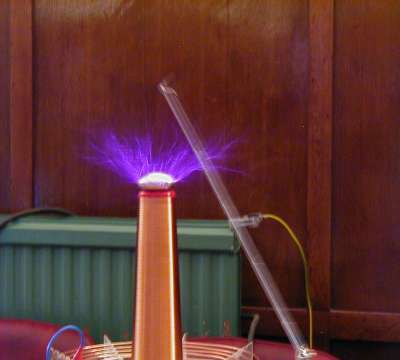As set forth by the International Mad Science Judiciary Committee, April 17th, 2008 at the Lair of Raw Power in the Deep Southern Pacific (not the other Southern Pacific Lair of Raw Power).
1) Mad Scientists shall build their machines/equipment/experimental apparatus much larger and more badass* than strictly necessary for no apparent reasons other than that they have the ability and capacity to do so.
3) Mad Scientists are encouraged to integrate disparate pieces of machinery into the same chassis and/or wiring schemas whenever doing so adds aesthetic value but not additional functionality [1].
4) Practicality must not be a concern of Mad Scientists at any time.
5) While Mad Scientists are expected to be creative and generate many Mad Ideas at a rapid rate, we note here that we discourage the recording of those ideas on non-Self-Destructable paper as they may be used as evidence in usurpation by assistants or in a civilian court [2].
6) Due to past security failures, Mad Scientists are forbidden from using either word or numeric puns and/or jokes as passwords, machine commands, and/or entry keys [3]. Cultural references are also strongly discouraged [4].
7) Mad Scientists should develop their own or be fluent in another’s cryptography schemas to encrypt inter-Mad Scientist communications and/or sensitive data. Alchemic symbology is now effectively banned.
8) Mad Scientists are hereby reminded to avoid putting chemical or biological samples into the same storage areas as their own food**.
9) Mad Scientists are banned from conducting human research [5]. We emphatically recommend not practicing self-experimentation (the Mad Scientists' Assistants Congress has asked that we implore you to not use them for experimentation). We condemn experiments on civilian subjects [6]. However, if you determine that a human organic system is vital to your research, please contact this body and we will provide you with zombies ad libitum.
10) Mad Scientists may not steal raw materials from cargo transports, be they naval, aerial, or land-based. This is too obvious and endangers yourself, your peers, and the continuance of Mad Science. You may, and are encouraged to, "re-purpose" abandoned or found materials.
11) Collaborations between Mad Scientists are encouraged and are required to follow the rules and procedures laid out in the Collaboration Articles of 1989 [7].
*In memorial to Sir Puj Dramke (1903-2005).
** In memory of Dr. Bartholomew Töppledigöts (1963-1999).
[1] For additional explanation, please refer to the 2005 case of "Oscilloscope inside Flow Cytometer Chassis".
[2] Dr. Ernstrüm Leipäkirja, 1888. "Bayern gegen die Furchtexperimenten Herr Doktor Leipäkirja." The state of Bavaria convicted Dr. Leipäkirja of diabolical intent and ran him out of town with pitchforks and torches. Dr. Leipäkirja was later reported (unsubstantiated) to be living and working in Puxico, Missouri, The United States of America.
[3] In 2007, 10 years of work by Drs. Pram Tiddly and Evox Evox Exox to develop artificial egg environments for embryonic chickens was destroyed when animal rights activists smashed their equipment after gaining access to their lair by guessing the password "toget2theotherside".
[4] In 2003, black hat hackers invaded the pre-sentient computer network of Hermes Plodd and reconfigured it to sell Viagra just as it was learning its first contextual words. He had used "HAL2000" as a password.
[5] The 1800s as a century led to this ban. The actions of Drs. Jekyll and Frankenstein so imperiled the continued existence of Mad Science that this ban was deemed necessary and incontrovertible.
[6] In 1974, Leroy Natty was convicted and jailed for mopping a disco dance floor with androgens solubilized in DSMO to test the effects of increased libido on the power of social mores. He was also permanantly evicted from the Mad Scientists' Association for his actions. Lest you judge him too harshly, it should be noted that reconstituted artificial human biological systems were unavailable at this time.
[7] In 1988 the collaborative laboratory space of Drs. Ruthie Blandry, Sandeep Ravapredavhanamuran and Xing Zhang were found abandoned and charred. An investigation revealed that each had been keeping data from each other, which eventually resulted in a catastrophic firefight between Drs. Blandry and Ravapredavhanamuran. Most of their bodies were recovered, while Dr. Zhang remains unaccounted for and is presumed dead.
The Laws of Mad Science are meant to be a living constitution and are reviewed and amended as needed at the annual Mad Scientist Symposium. If you have any additions, deletions, changes, or retractions that you believe need to be considered for this year's upcoming conference, please append them below and they will be taken into consideration (please also leave your identifying Mad Scientist credentials, as anonymous or unverified suggestions will be rejected wholesale).


















